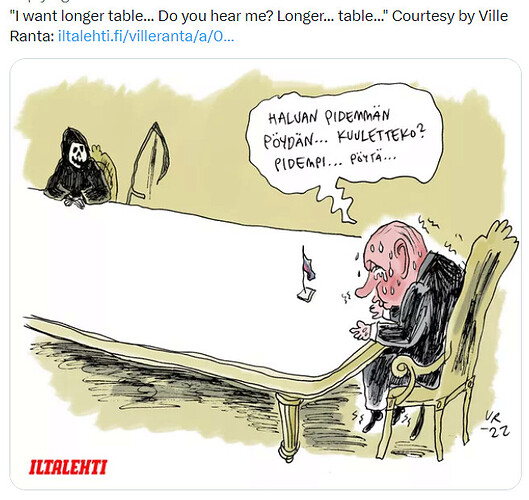-
Just finished listening to whole podcast while walking, including portion from 21’ on twice. Kofman is certainly worth listening to and “War on the Rocks” even provides a standard .mp3 download link, so I will certainly listen to any future episodes that are linked here.
-
I don’t have anything useful to add to the summary but was listening for the reference to CB90s as it surprised me when assault boats for amphibious infantry were listed together with Bradley and Marder IFVs. Did not hear any reference. Suspect it was confusion with other reports that described CB90 as an IFV and separate reports of CV90, which actually is an IFV going to Ukraine.
- Thanks, found it. My understanding is that the real issue is “Mission Command” with recently recalled reserve officers at battalion level and above still having a “Soviet” culture of top down micromanagement direction of subordinate units and using their control of ISR assets to enforce their superior “Situational Awareness” instead of unleashing initiative from below.
My view is that both the “Situational Awareness” and actual Target Acquisition engagements using drones can be can be made more available for use by the lowest possible echelons via low bandwidth continuous updates to the ATAK Android Tablets for team awareness that I believe are available below platoon level and could be available to every fire team.
That is why I was (and still am) looking for clarification/confirmation of my picture of communications and related power supplies in front line positions.
Will return to that and earlier discussion with @elfm by writing a description of how high tempo connection between sensors, deciders and shooters is feasible now at near machine speeds.
A 2020 Congressional Research Service report on “ISR Design for Great Power Competition” makes it clear that this is still aspirational rather than operational reality for US forces and is a clear gap in urgent operational requirements for Ukraine that could be filled by available technology.
Connecting Sensors to Shooters
The U.S. military contends that future conflicts within a sophisticated, highly-contested, A2/AD
environment will be won by the side with an information advantage, enabling the ability to
outpace, outthink, and outmaneuver adversaries across multiple domains (space, air, land, sea,
and cyber).23 To maintain its information advantage and dominate this new battlefield, the U.S.
military is reportedly adopting a network-centric approach (connecting every sensor with every
shooter) so that it can move data at machine speed and overwhelm an adversary by attacking from
all domains.24 However, the emphasis is placed on the ability to find and fix a target, not
necessarily finish the target, according to the Chief of Staff of the Air Force (CSAF), who stated
“it doesn’t matter as much what mechanism is used to destroy a target as it is to be able to rapidly
locate and characterize it.”25
Some analysts take a more skeptical approach to JADC2. They raise questions about
technological capabilities and unrealistic ambition of fielding a network that can securely and
reliably connect sensors to shooters and support C2 in a lethal, electronic warfare-rich
environment.35 Others question who would have decisionmaking authority across domains in
JADO and question the human role in making JADC2 decisions in real time.36
For the front lines of an artillery war, including those front lines being breached by mechanized infantry and armour, fielding a network that can reliably connect drones to shooters simply isn’t optional. The capability to support C2 in a lethal and EW-rich environment needs to be deployable at the speed of relevance. That means completion of RDT&E in advance of Russian EW getting its act together, perhaps with Chinese assistance. If enemy EW does not turn up for battle then actual deployment can be delayed, but it needs to be prepared for now, not when drones start having a 3 flight life span again.
That network is the core of a network centric Drone Force and implies decision making by engagement commands formed between drone operators and shooters who are not necessarily part of the same chain of command below battalion or brigade level.
The concept of drones being organic to lower level units seems to me to amount to “traditional” hoarding of resources by unit commanders that needs to be broken for the resources to rapidly respond at the speed with which drones are capable of responding to requests for support from areas that are adjacent to but not under the same command as the area from which they are launched.
So I am still hoping for more feedback on:
Will then get back to earlier.








